
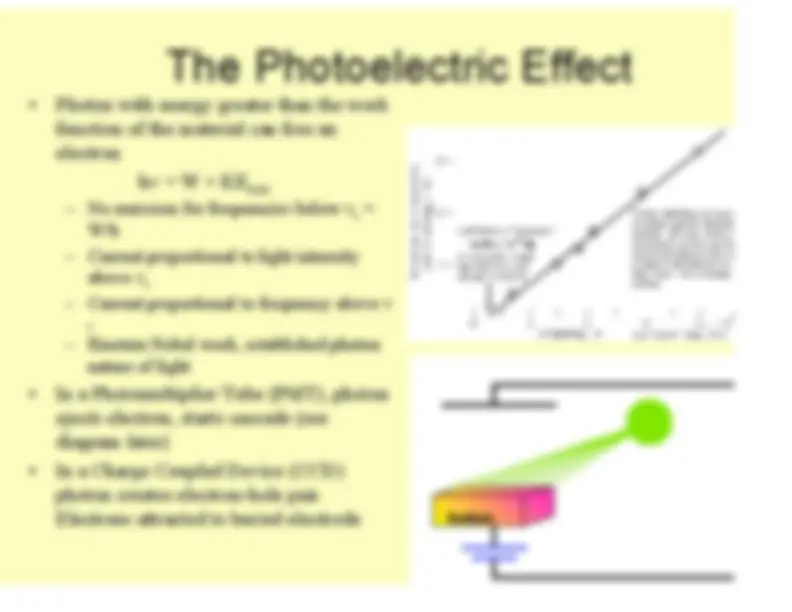
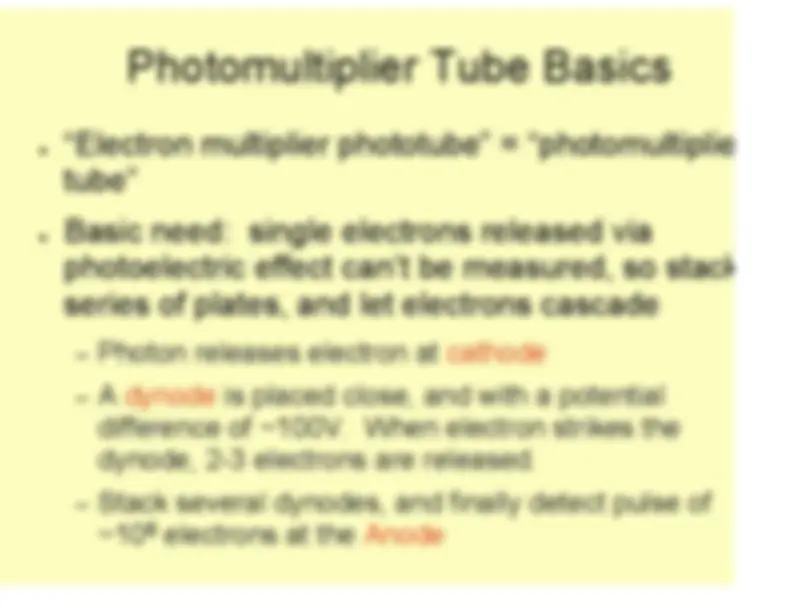
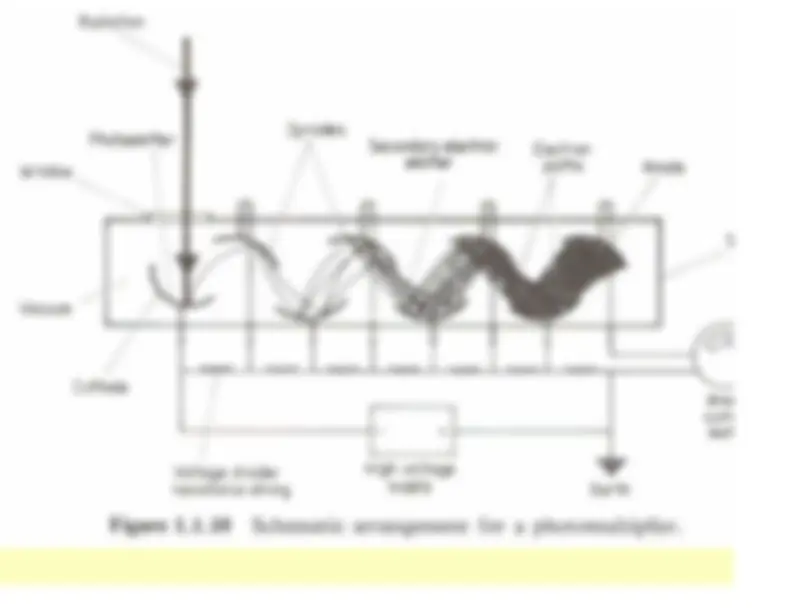
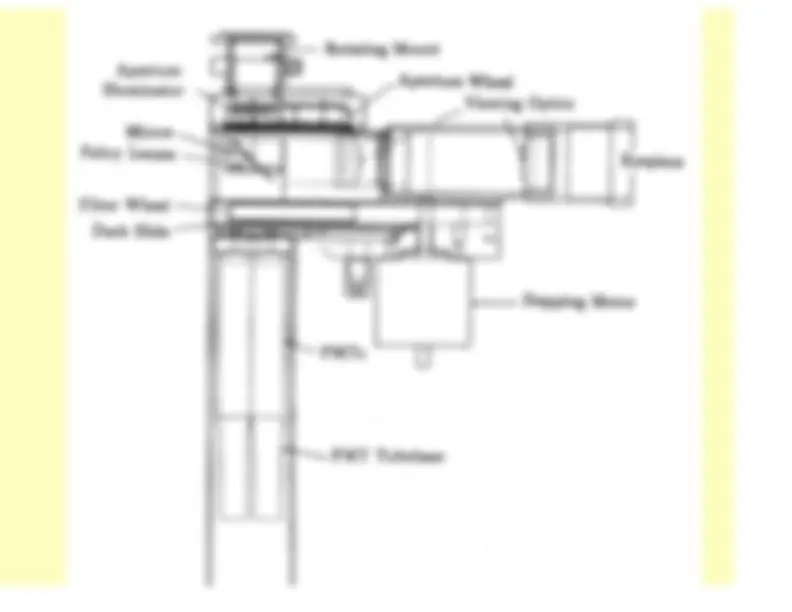
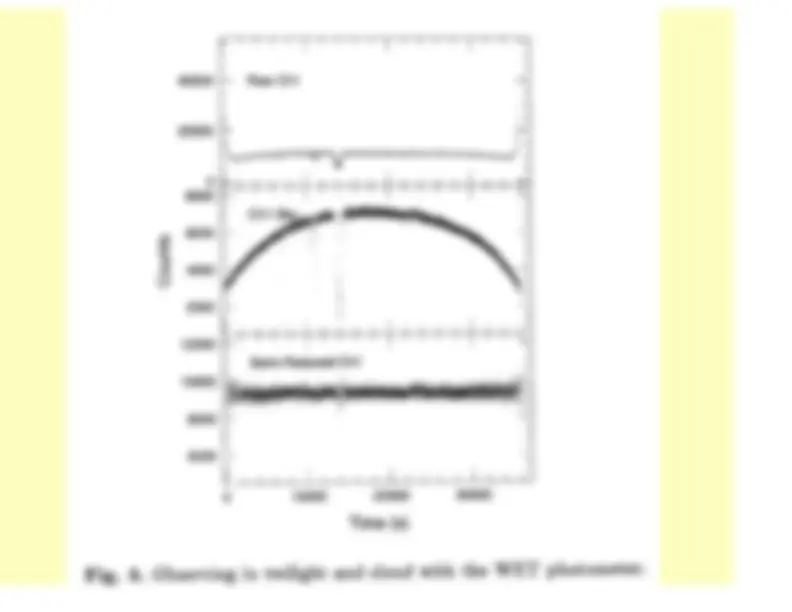
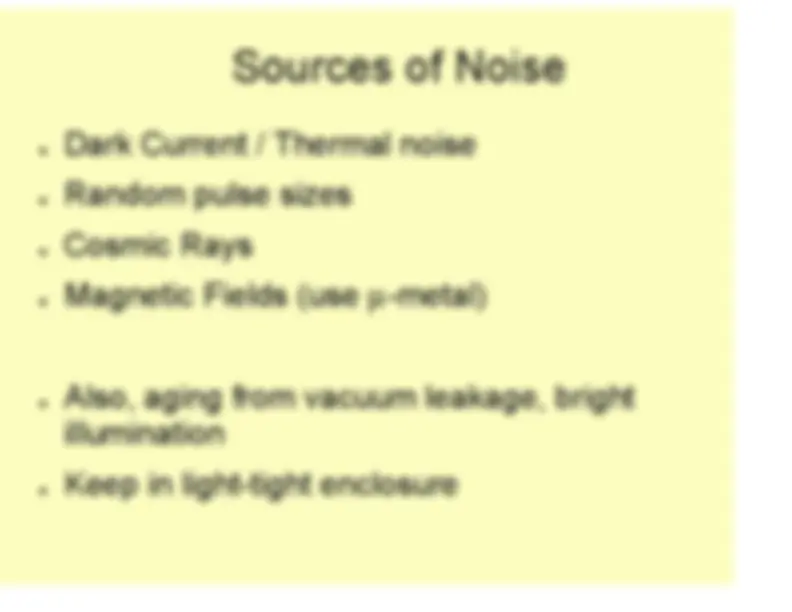
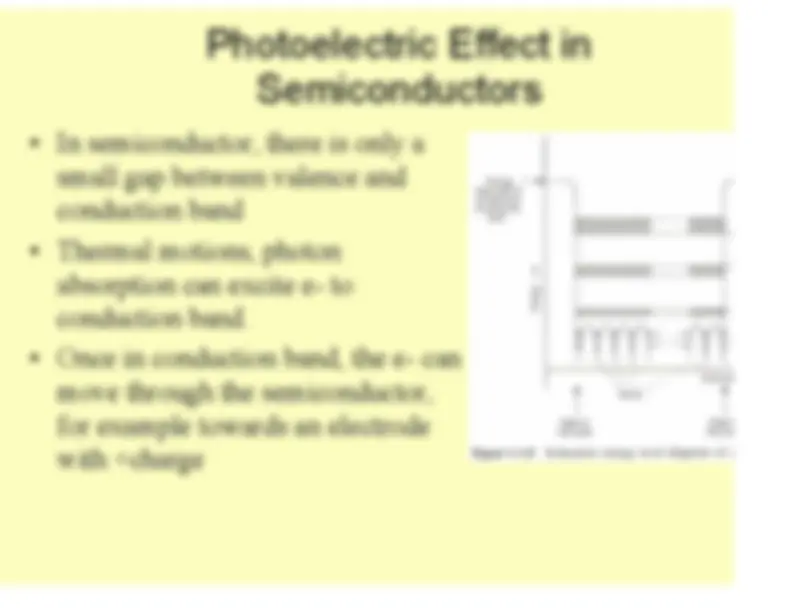
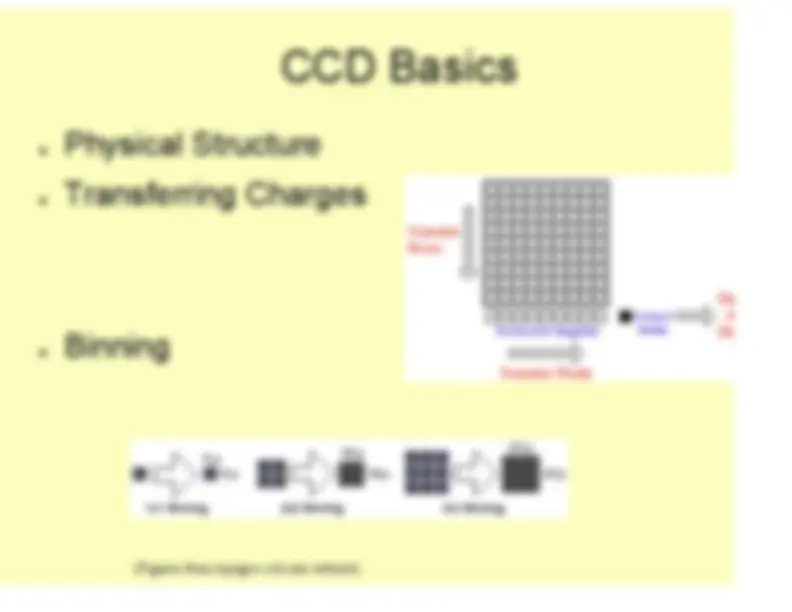
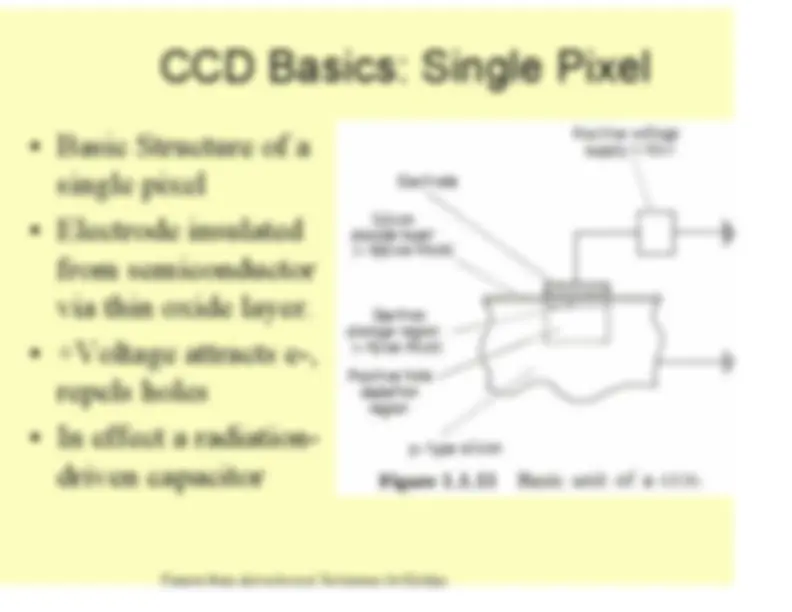
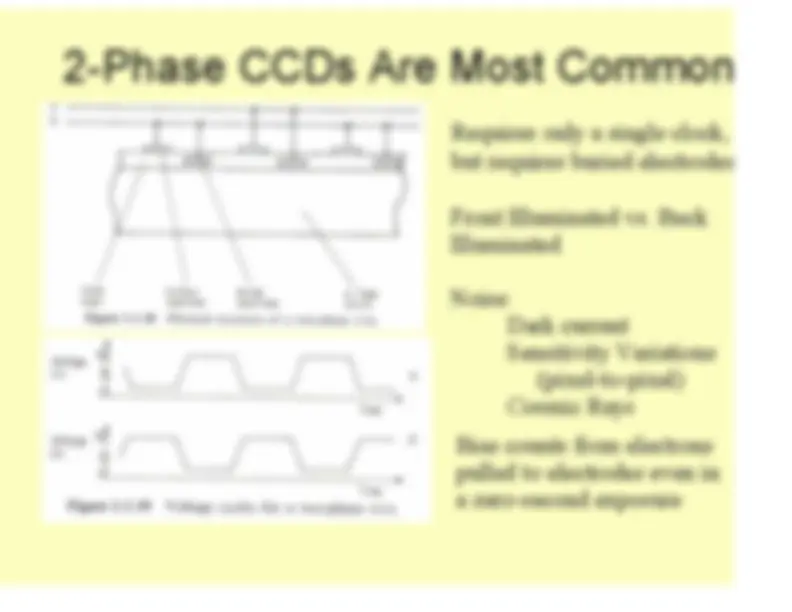
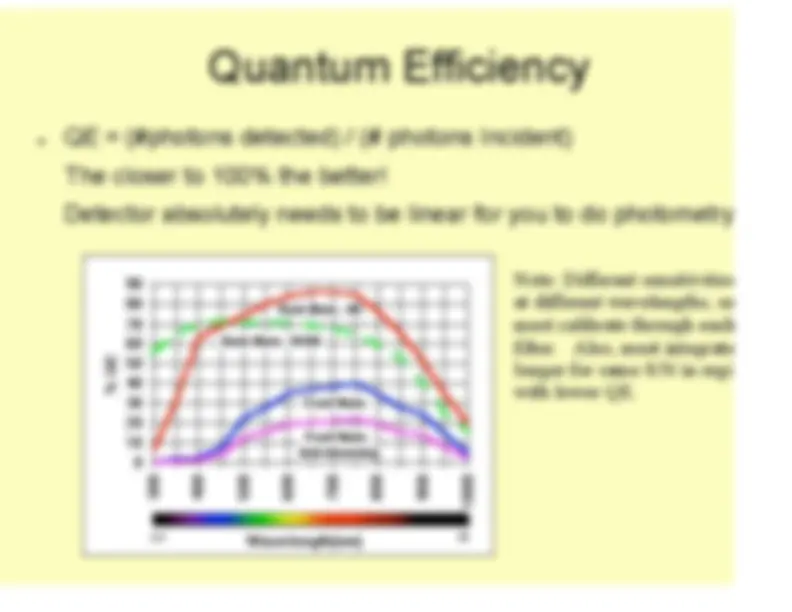
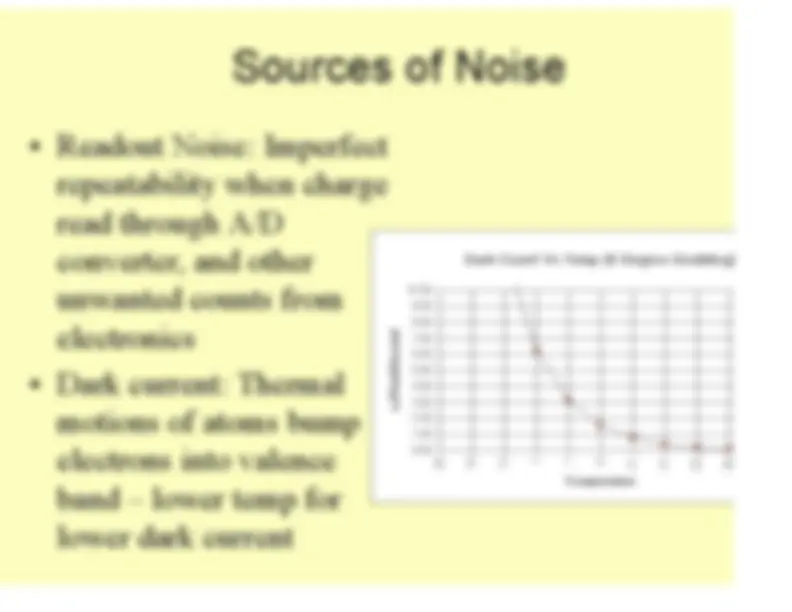
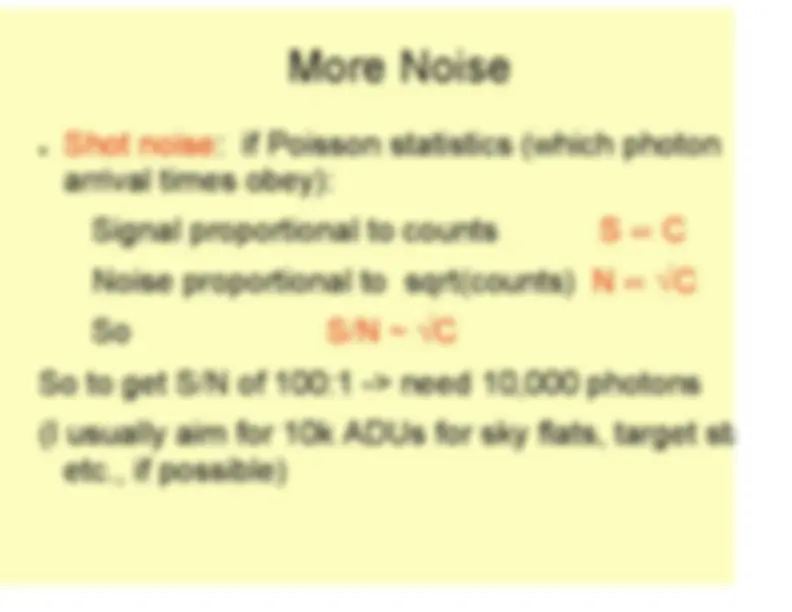
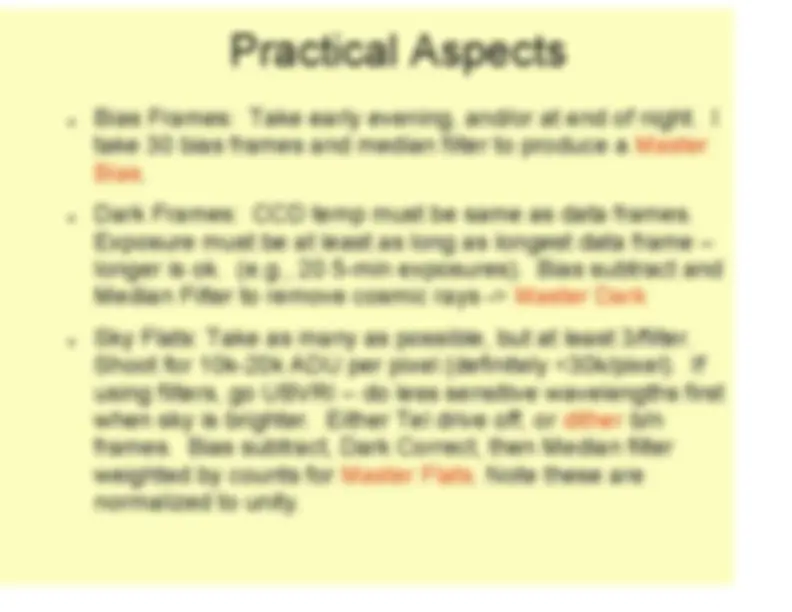
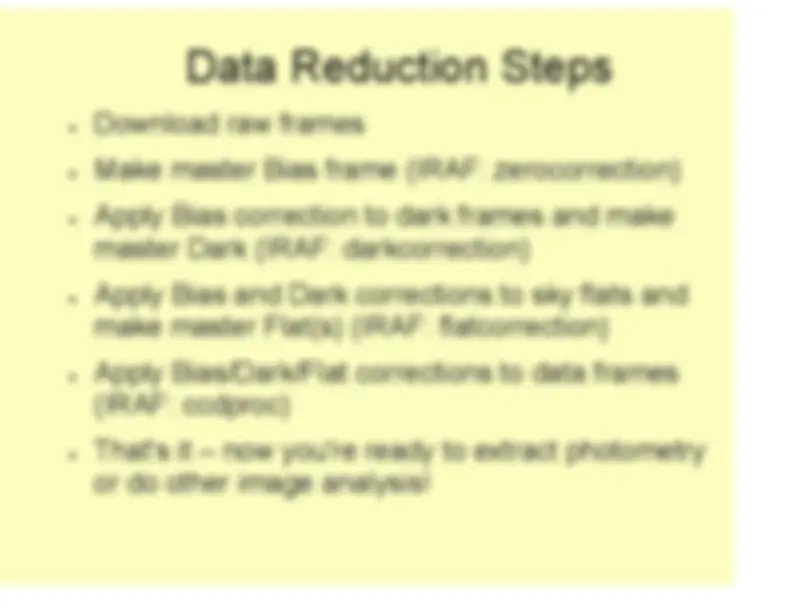


Study with the several resources on Docsity

Earn points by helping other students or get them with a premium plan


Prepare for your exams
Study with the several resources on Docsity

Earn points to download
Earn points by helping other students or get them with a premium plan
Community
Ask the community for help and clear up your study doubts
Discover the best universities in your country according to Docsity users
Free resources
Download our free guides on studying techniques, anxiety management strategies, and thesis advice from Docsity tutors
Material Type: Notes; Professor: Perlman; Class: Observational Astronomy; Subject: Space Sciences; University: Florida Institute of Technology; Term: Spring 2010;
Typology: Study notes
1 / 23

This page cannot be seen from the preview
Don't miss anything!
















● Photographic Plates ● The Photoelectric Effect ● Photomultiplier Tube Basics ● CCD Basics: Structure and Operation ● Quantum Efficiency ● Binning ● System Gain ● Noise Sources ● Optimal Data and Calibration Images ● Data Reduction Basics
● Used historically ● Wide FOV, high resolution ● But terrible Quantum Efficiency (QE ~ 1%)
● “Electron multiplier phototube” = “photomultiplier tube” ● Basic need: single electrons released via photoelectric effect can’t be measured, so stack a series of plates, and let electrons cascade
● Dark Current / Thermal noise ● Random pulse sizes ● Cosmic Rays ● Magnetic Fields (use μ-metal) ● Also, aging from vacuum leakage, bright illumination ● Keep in light-tight enclosure
● Physical Structure ● Transferring Charges ● Binning (Figures from Apogee ccd.com website)
● QE = (#photons detected) / (# photons Incident) The closer to 100% the better! Detector absolutely needs to be linear for you to do photometry Note: Different sensitivities at different wavelengths, so must calibrate through each filter. Also, must integrate longer for same S/N in regions with lower QE.